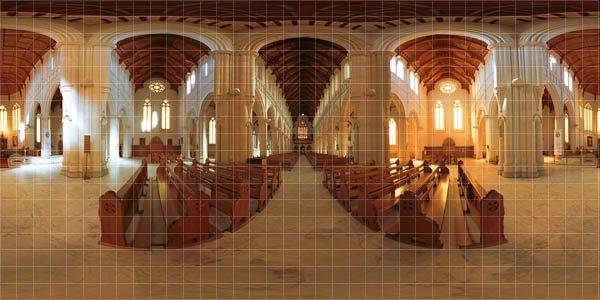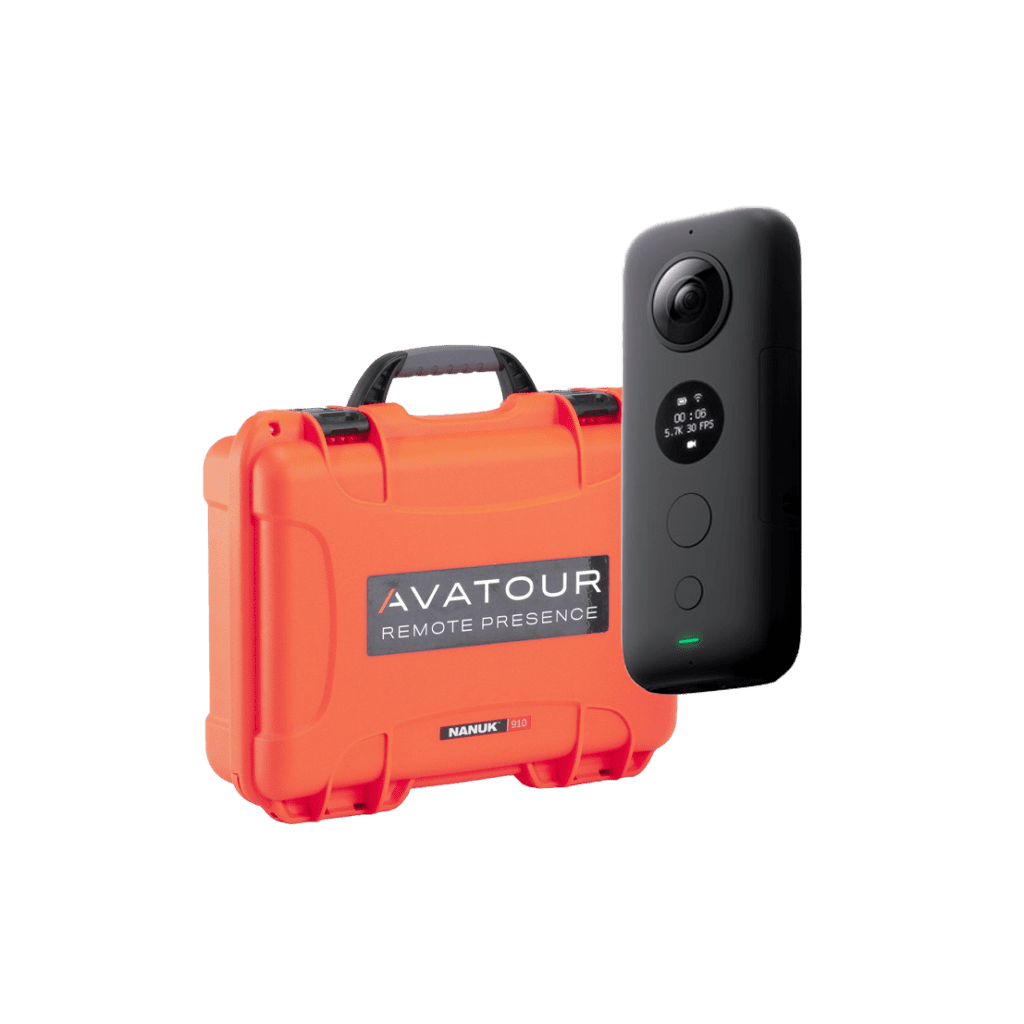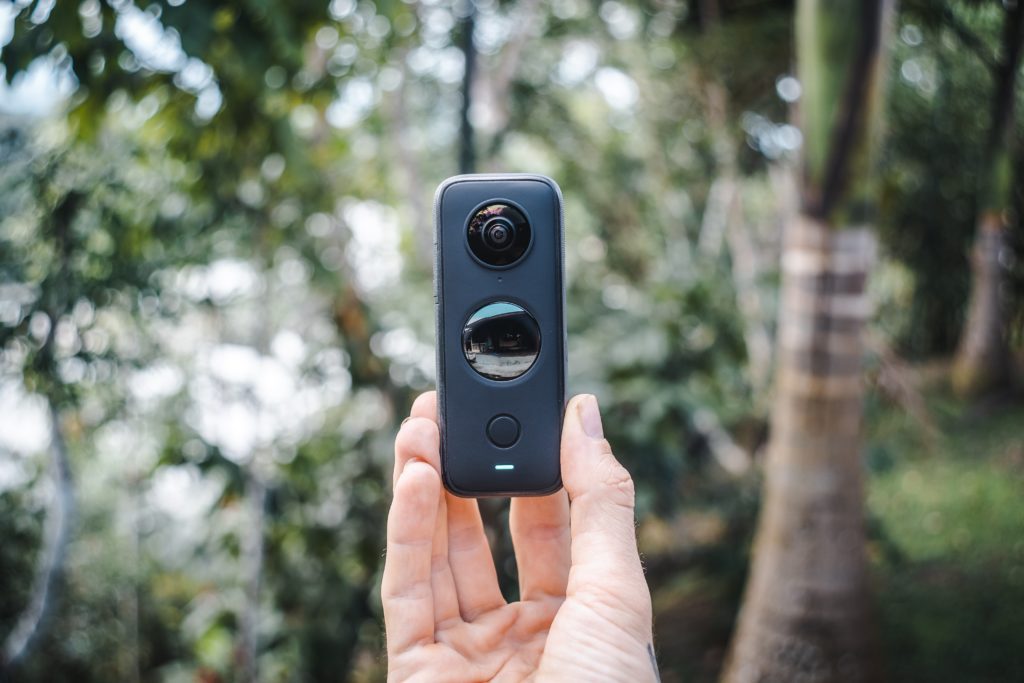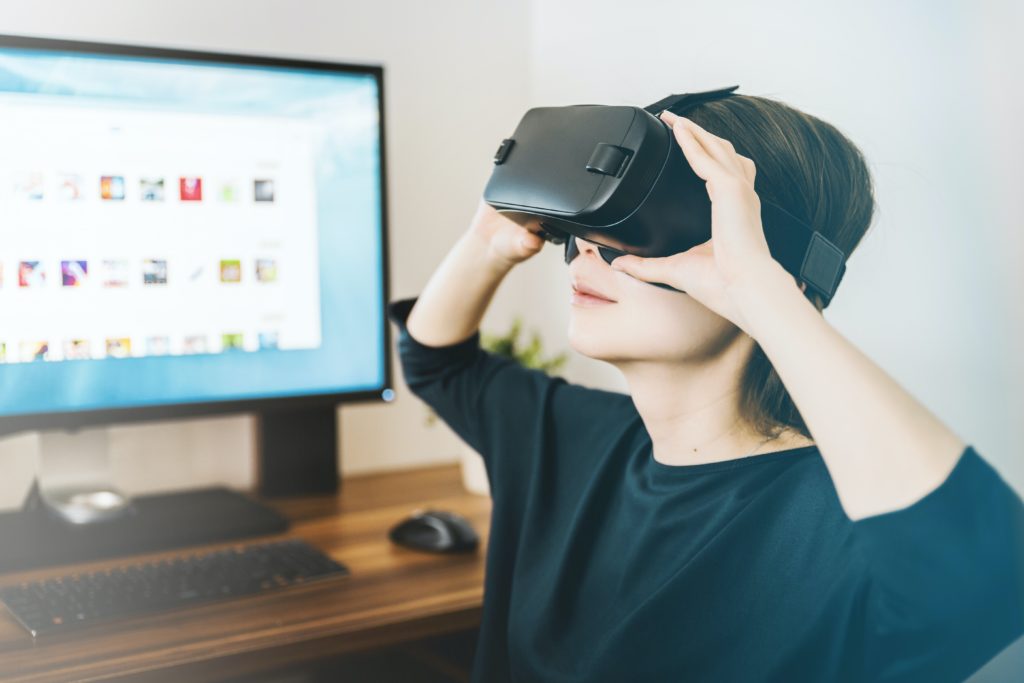360° cameras continue to grow in popularity as they become better in quality, and more affordable in price. With latest releases from innovative companies such as Insta360 and LabPano more and more people are drawn to the unique capabilities of 360-degree cameras.
So… how do 360-degree cameras work?
360-degree cameras work by capturing an entire panoramic view in a single instant.
Standard cameras, like the one on your smartphone, typically have a field-of-view, or the area that is visible through the camera, of about 60-90 degrees. Even a “wide angle” lens generally covers only 100 degrees or so.
360-degree cameras typically have multiple, wide-angle (“fisheye”) lenses arranged in a carefully designed circular geometry, which allows them to capture every angle of the panoramic view at once, providing an complete and unobstructed view of one’s surroundings.
Images and videos captured by each lens are then stitched together to create a single 360-degree panorama. The resulting stitched image creates a 360-degree photo, or one frame in a 360-degree video.
There are several different projection formats available to map the 360 sphere onto a standard rectangular image frame, similar to how a map of the world is represented. The most common and most compatible format is called an “equirectangular projection.”
Here’s an example of this projection:

Images and videos in this format can be displayed on a variety of devices, including smartphones, computers, VR headsets, and even immersive rooms like the ones available from our partner Igloo Vision. Read more about the Avatour x Igloo Partnership here.
Some 360-degree cameras even come equipped with special features that allow you to stitch together multiple 360-degree images to create an even wider field of view. This is how many 360-degree cameras are able to achieve such a high level of image quality, detail, and clarity.
Other 360-degree cameras might use a single lens, but they utilize advanced image processing algorithms to “unwrap” the images they capture and create a panoramic effect. All 360-degree cameras provide a complete and even birds eye view in a dynamic range.


There are two main types of 360-degree cameras: Two-lens cameras and multi-lens cameras.
Two-lens 360 cameras offer a very straightforward solution. They utilize two ultra-wide fisheye lenses, one on each side of the camera. The lenses work together to cover the entire 360-degree field, capturing everything in two shots. The images from these two lenses are then merged to create a complete spherical view.
This design simplifies the photography process, making two-lens cameras particularly appealing for casual users or those new to 360-degree photography. While these cameras are more user-friendly and affordable, they may not match the image quality of multi-lens cameras.

Multi-lens 360 cameras are the choice for professional quality and detail. They feature several lenses positioned around the camera body, with each lens capturing a portion of the surroundings.
This sophisticated process makes multi-lens cameras ideal for applications where image quality is crucial, such as virtual reality content, professional virtual tours, and high-end real estate photography. However, this high quality comes with its complexities. The stitching process can introduce errors, particularly when objects are very close to the camera, leading to visible seams or distortions. Moreover, these cameras tend to be bulkier and more expensive than their two-lens counterparts.
Ultimately, whether to opt for a multi-lens or a two-lens 360 camera depends on the user’s requirements. For those seeking the highest image quality and precision, a multi-lens camera is the best choice. If ease of use, portability, and cost are more significant concerns, a two-lens camera will provide a convenient and effective way to step into the world of 360-degree content.
Some of the most common 360-degree cameras on the market today are:

360-degree content in Virtual Reality
As virtual reality headsets have become more accessible, it has also become the preferred method of consuming 360° content. Viewers can experience a more immersive, and much more realistic experience in VR than on a computer, tablet, or mobile device.
This level of immersion has opened new possibilities in VR, especially with the release of the much anticipated Apple Vision Pro headset, set to release in February 2024.
(Check out our article on our first impressions on the Apple Vision Pro)
Experiences such as live concerts, and virtual tourism became popular, especially during the Covid pandemic, and we anticipate these experiences will only grow in popularity in the future.
360-degree cameras are enabling new business applications
360-degree cameras and their unique ability to capture an entire space and surroundings have brought on many new opportunities and applications for businesses across industries. These use cases go beyond the typical 360° tours you may see of your local business, but more sophisticated solutions such as 360° Video Conferencing, Digital Twins, Remote Inspections & Audits, Live Virtual Tours, Remote Training, and more.
